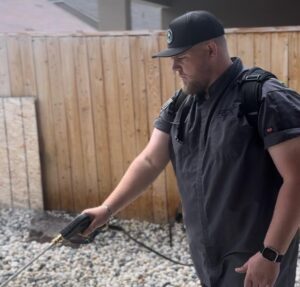Encounters with biting pests and stinging insects can happen literally in the blink of an eye. Whether it’s a spider, ant, flea, or wasp, the first few minutes can make a big difference in how you feel and how quickly you recover.
Knowing what to do immediately after a bite or sting helps you stay calm and reduces the chances of a more severe problem.
Recognize the Signs
Not all bites and stings look or feel the same. Some cause mild itching or redness. Others swell up, hurt, or even trigger allergic reactions. Here’s what to watch for:
- Redness or swelling at the site
- Pain or itching
- Small bump or blister
- Warmth around the area
- Hives or rash (sometimes)
Most reactions are mild. But if you see trouble breathing, swelling of the face or throat, or dizziness, get medical help right away.
Step-by-Step First Aid for Bites and Stings
1. Move to a Safe Area
Step away from the place where you were bitten or stung. Some pests attack in groups or keep biting if disturbed.
2. Wash the Area
Use soap and water. This removes dirt, saliva, or venom left behind. Clean skin heals faster and lowers the risk of infection.
3. Apply a Cold Compress
Use a clean cloth with cold water or an ice pack wrapped in a towel. Hold it on the bite for 10-15 minutes. This helps with swelling and pain.
4. Avoid Scratching
Scratching makes bites worse. It can break the skin and cause infection. If itching is strong, cover the area with a bandage or wear gloves at night.
5. Use Over-the-Counter Relief (If Needed)
You can use anti-itch creams, calamine lotion, or oral antihistamines to ease discomfort. Always follow package instructions.
When to Get Medical Help
Most bites and stings get better on their own. But some need a doctor’s care. Seek help if you notice:
- Trouble breathing or swallowing
- Swelling of the lips, tongue, or throat
- Severe pain or spreading redness
- Signs of infection (pus, fever, red streaks)
- Multiple stings or bites, especially in young children
If you’re unsure, it’s best to consult a healthcare provider. You can head on over to the closest emergency room to get treated.
Special Cases: Spider and Tick Bites
Spider Bites
Most spiders in the U.S. aren’t dangerous. But bites from black widows or brown recluses need special care. Watch for:
- Severe pain or cramping
- Ulcer or blister at the site
- Nausea or sweating
If you think a dangerous spider bit you, call your doctor.
Tick Bites
Remove ticks as soon as you see them. Use fine-tipped tweezers. Grasp the tick close to the skin and pull straight out. Clean the area and your hands with soap and water. Save the tick in a container in case you need to show a doctor.
Preventing Future Bites
First aid is only part of the solution. You also want to avoid getting bitten again. Here’s how:
- Keep living spaces clean and free of clutter.
- Seal cracks and gaps where pests enter.
- Use screens on windows and doors.
- Store food in sealed containers.
- Vacuum carpets and furniture regularly.
What to Tell Your Pest Control Technician
If you’ve had a recent bite or sting, let your pest control provider know. They can:
- Identify the pest based on your description or a photo.
- Check for nests, hives, or hiding spots.
- Recommend targeted treatments that address the specific pest.
This helps reduce the risk of future bites and keeps your home safer.
How Professional Pest Control Helps
Trained technicians use several methods to reduce exposure to biting and stinging pests:
- Targeted treatments that focus on problem areas
- Regular inspections to catch infestations early
- Advice on sealing entry points and removing attractants
These steps lower the chances of another encounter and getting bitten by an insect or pest.
What About Pets and Kids?
Children and animals are more likely to get bitten because they play on the floor, in the yard, or in hidden corners. After a bite:
- Watch for signs of allergic reaction or infection.
- Keep the area clean and covered.
- Contact your pediatrician or veterinarian if you see swelling, trouble breathing, or unusual behavior.
Common Myths About Bites and Stings
- “You should suck out the venom.” Don’t do this. It doesn’t help and can make things worse.
- “All bites need antibiotics.” Most heal on their own. Only use antibiotics if a doctor prescribes them.
- “If you can’t see a stinger, it’s not serious.” Some stings don’t leave a stinger but can still cause reactions.
Final Steps: Clean Up and Monitor
After treating a bite or sting:
- Throw away any bedding, clothing, or towels that touched the pest if you suspect infestation.
- Watch the bite for a few days. If redness, swelling, or pain gets worse, call your doctor.
- Take photos if the area changes. This helps your doctor or pest control provider identify the problem.
Conclusion
Quick, simple actions taken immediately after a bite or sting can help you recover more quickly and prevent complications. Clean the area, use cold packs, and watch for signs of trouble.
Prevent future bites by keeping your home clean and working with a pest control professional.









